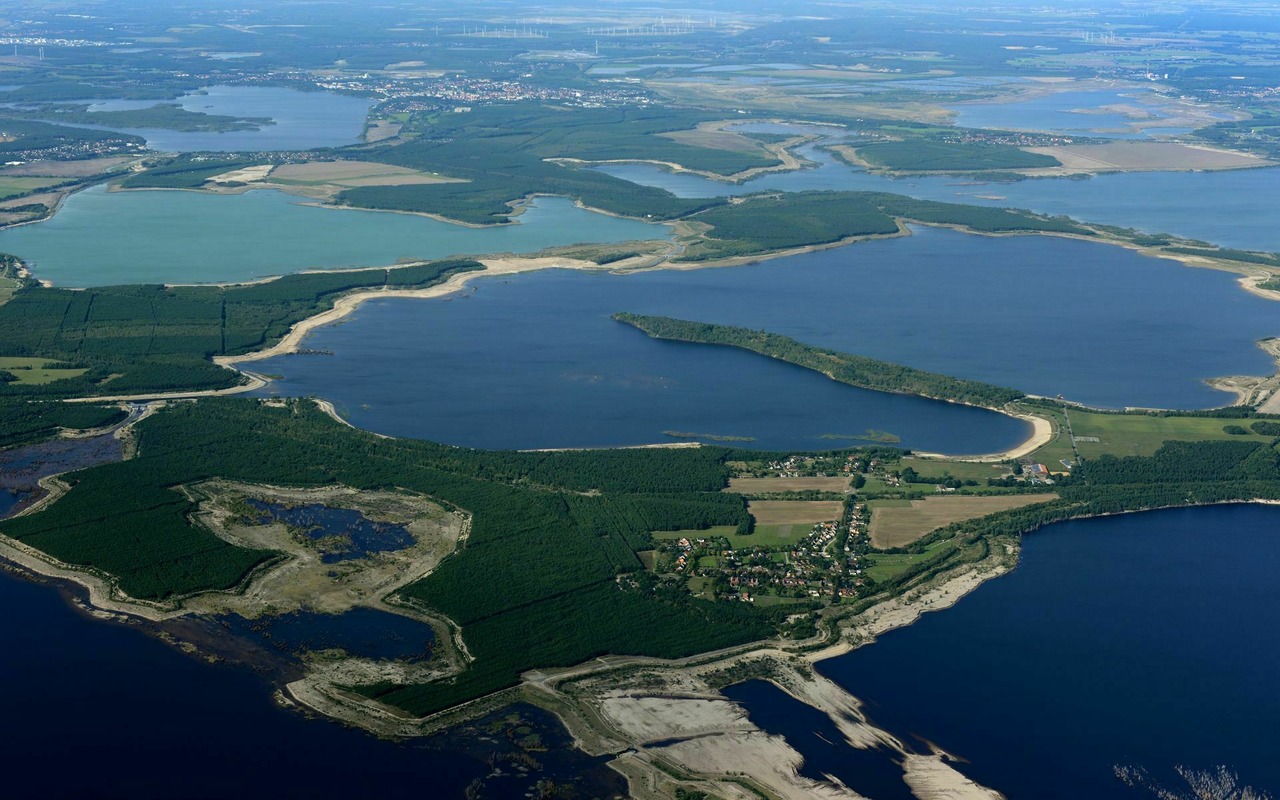From miner to mariner
Transforming opencast mines into swimming lakes and industrial monuments into visitor attractions: the Lusatian Lakeland is Europe’s largest man-made region of lakes.
Heinz Müller greets his guests with a hearty “Glück Auf”, the traditional German miners’ greeting. He has been taking groups on tours of the Lusatian Lakeland for 16 years. The flooding of old opencast mines has created a new holiday destination with more than two dozen very different bodies of water. Ten of these will be linked by navigable canals in the near future. Even though not all the lakes are completely flooded yet, there are plenty of lakeside paths for cycling, beaches for sunbathing and marinas and sailing schools for boating to be enjoyed.
Heinz Müller is a Lusatian through and through. Born in Senftenberg, the 69-year-old is a founding member of Traditionsverein Braunkohle Senftenberg, an association dedicated to keeping the local mining history alive. And he knows the industry’s eventful history inside out, having worked in the Lusatian mines for more than 40 years. The association was founded in 2001 when active coal mining in and around Senftenberg came to an end.
Today, the region’s lakeside cycling paths, beaches, marinas and sailing schools are already a big draw.
To ensure that holidaymakers enjoy their stay, new attractions are being built along the lakes and waterways every year. The marina on Lake Senftenberg has been providing a maritime atmosphere since 2013, and that same year the first navigable link to Lake Geierswalde opened for pleasure craft and sightseeing boats. Müller’s not the only one who enjoys the contemporary architecture. “Visitors are really drawn to the marina and the pier,” he says of his favourite place.
A life dedicated to coal mining
The former miners in the association are dedicated to preserving traditions and promoting the region. On special occasions, such as Miners’ Day, they wear their ceremonial dress featuring a tall hat with a feather tuft. Mining and coal production have shaped Lusatia since the mid-19th century. More than two billion tonnes of lignite have been mined in the region at depths of up to 60 metres. This left behind a broken landscape, which is now undergoing extensive restoration so that it can be used again. Heinz Müller has all the facts and figures in his head and is happy to share his knowledge with others.
The future lies by the water
There is more to the Lusatian Lakeland than just new lakes. The region is also home to industrial monuments – such as the F60 overburden conveyor bridge on Lake Bergheide, nicknamed the ‘horizontal Eiffel Tower’ – which attract visitors in droves. Alongside new hotels, there are also campsites and restaurants, while rafts and holiday homes float on the lakes. In the summer months, the locals will often hop on their bikes and cycle around the new lakes, or they might bring the old kayak up from the cellar to paddle across Lake Senftenberg. “The future lies by the water, with beaches, marinas and everything they entail. It will be some years yet before all opencast mines are completely flooded, but now is a good time to experience the transformation process up close.”



